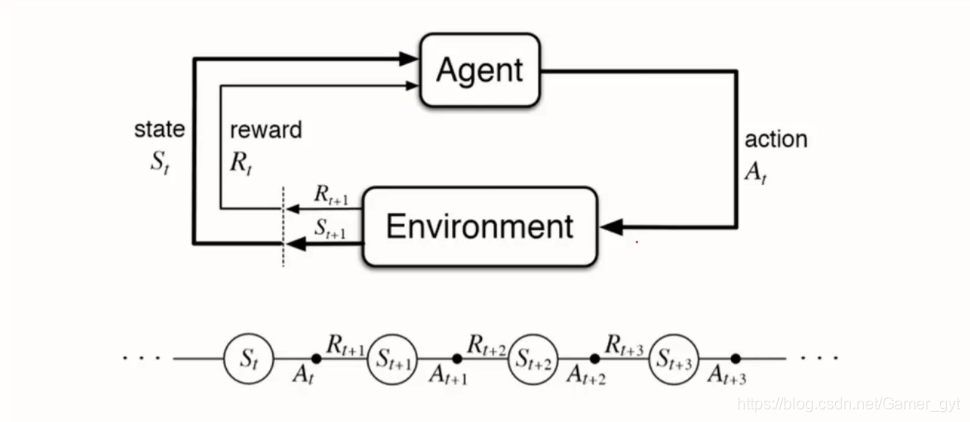【自我提升的强化学习策略:Python实现与深度解析】:掌握核心提升技巧
发布时间: 2024-08-31 19:18:54 阅读量: 122 订阅数: 56 


# 1. 强化学习概述
## 强化学习简介
强化学习是机器学习领域的一个分支,它关注如何基于环境提供的奖励信号来训练智能体做出决策。在强化学习中,智能体通过与环境交互,逐步学习如何执行任务以获得最大的累积奖励。
## 强化学习的核心组件
强化学习的关键组成部分包括智能体(Agent)、环境(Environment)、状态(State)、动作(Action)和奖励(Reward)。智能体学习采取动作来影响环境状态,并根据从环境中获得的反馈来调整其策略。
## 强化学习的应用场景
强化学习已经应用于各种场景,如游戏、机器人控制、自动驾驶车辆、推荐系统和金融领域。它为解决复杂的决策问题提供了强大的工具。
## 强化学习与监督学习的对比
与监督学习不同,强化学习不需要预定义的标签,而是通过试错来学习。这种学习方式更符合人类和动物学习的自然过程,为解决传统机器学习方法难以应对的问题提供了一种新的途径。
```mermaid
graph LR
A[强化学习简介] --> B[核心组件]
B --> C[应用场景]
C --> D[与监督学习对比]
```
通过以上内容,我们对强化学习有了初步的了解。在后续章节中,我们将深入探讨如何利用Python这一强大的编程语言来实现强化学习,并进一步了解其在不同领域的应用前景。
# 2. Python在强化学习中的应用
## 2.1 强化学习与Python的结合
### 2.1.1 Python在强化学习中的作用
Python作为一门流行的高级编程语言,在数据科学和机器学习领域中占有重要的地位。它的强大库支持和简洁语法使得Python成为实现复杂算法,特别是强化学习算法的理想选择。
在强化学习领域中,Python能够提供以下几个方面的重要作用:
- **快速原型开发**:Python的代码简洁易懂,开发者可以快速实现强化学习概念和算法原型,便于验证新想法的可行性。
- **丰富的库支持**:众多强大的科学计算和机器学习库,如NumPy、Pandas、TensorFlow和PyTorch等,都是用Python编写的或者提供了Python接口,这些库极大降低了算法实现的复杂度。
- **跨领域集成**:Python强大的生态系统可以方便地与图形界面、游戏引擎等其他系统集成,这为创建和测试复杂的强化学习环境提供了便利。
- **社区和资源**:由于Python在AI领域的普及性,有关强化学习的学习资源和社区支持非常丰富,这为学习者和研究者提供了极大的帮助。
### 2.1.2 主要的Python强化学习库
在强化学习的研究和应用中,Python提供了多个专门的库来简化算法的实现和测试。下面是一些广泛使用的Python强化学习库:
- **OpenAI Gym**:由OpenAI开发的Gym库是一个用于开发和比较强化学习算法的工具包,提供大量的环境,并支持自定义环境的创建。
- **TensorFlow** 和 **PyTorch**:这两个深度学习框架也提供了用于强化学习的高级API。例如,TensorFlow有TF-Agents,PyTorch则有PyTorch Policy Gradient和PyTorch DQN。
- **stable-baselines**:基于TensorFlow和PyTorch的高级强化学习库,提供了一系列稳定和预先训练好的强化学习模型。
- **keras-rl**:一个将Keras深度学习库与强化学习算法结合的库,使深度强化学习模型的建立更加便捷。
接下来,我们将详细介绍如何在Python中搭建强化学习环境并实现基础的强化学习算法。
## 2.2 环境搭建与项目基础
### 2.2.1 安装必要的Python库
在开始实现强化学习项目之前,我们需要安装一些必要的Python库。这些库不仅包括上述提到的强化学习库,还包括进行数据处理和科学计算的库。
可以通过pip(Python的包安装器)安装这些库:
```bash
pip install numpy pandas matplotlib pygame opencv-python gym tensorflow
```
这个命令将会安装一些基础的科学计算库如NumPy和Pandas,可视化库Matplotlib,游戏开发库Pygame和OpenCV,以及我们将在后续章节中使用到的TensorFlow强化学习库。
安装完成后,可以通过导入这些库的模块来验证安装是否成功:
```python
import numpy as np
import pandas as pd
import matplotlib.pyplot as plt
import pygame
import cv2
import gym
import tensorflow as tf
print('Library imports successful.')
```
### 2.2.2 创建强化学习项目的基础结构
一个良好的项目基础结构有助于管理复杂度,确保代码的可读性和可维护性。对于一个强化学习项目,可以按照以下的文件结构来组织代码:
```
project/
│
├── README.md
├── requirements.txt
├── environment.py
├── agent.py
├── model.py
├── utils.py
├── main.py
└── data/
```
- `README.md`: 包含项目介绍、安装指南、使用方法等。
- `requirements.txt`: 包含项目所需的所有Python库。
- `environment.py`: 包含定义强化学习环境的代码。
- `agent.py`: 包含强化学习算法的主体,如Q-learning或SARSA算法。
- `model.py`: 包含深度学习模型的代码(如果需要)。
- `utils.py`: 包含辅助工具函数。
- `main.py`: 包含运行实验和训练的入口代码。
- `data/`: 用于存放数据和模型训练的中间结果。
通过以上结构,我们可以组织代码,使其逻辑清晰,并且可以快速定位到项目中的具体模块。
## 2.3 基本算法与Python实现
### 2.3.1 Q-learning算法的Python实现
Q-learning算法是强化学习中一种无模型的时序差分控制算法,用来学习在给定状态下采取特定行动的期望效用。
以下是Q-learning算法的一个简单Python实现:
```python
import numpy as np
import random
class QLearningAgent:
def __init__(self, actions, learning_rate=0.01, discount_factor=0.9, epsilon=0.1):
self.actions = actions
self.lr = learning_rate
self.gamma = discount_factor
self.epsilon = epsilon
self.q_table = {}
def choose_action(self, state):
if random.uniform(0, 1) < self.epsilon:
action = random.choice(self.actions)
else:
action = max(self.q_table.get(state, {}), key=self.q_table[state].get)
return action
def learn(self, state, action, reward, next_state):
if next_state in self.q_table:
max_future_q = max(self.q_table[next_state].values())
else:
max_future_q = 0
current_q = self.q_table.get((state, action), 0)
new_q = (1 - self.lr) * current_q + self.lr * (reward + self.gamma * max_future_q)
self.q_table[(state, action)] = new_q
```
该算法的核心在于 `learn` 方法,它根据Q-learning更新规则来调整Q值表格。`choose_action` 方法则结合了探索(exploration)和利用(exploitation)原则来决定采取何种动作。
### 2.3.2 SARSA算法的Python实现
SARSA是另一个无模型的时序差分控制算法,与Q-learning不同的是,SARSA在学习过程中考虑了当前动作与下一个动作的选择。
以
0
0





